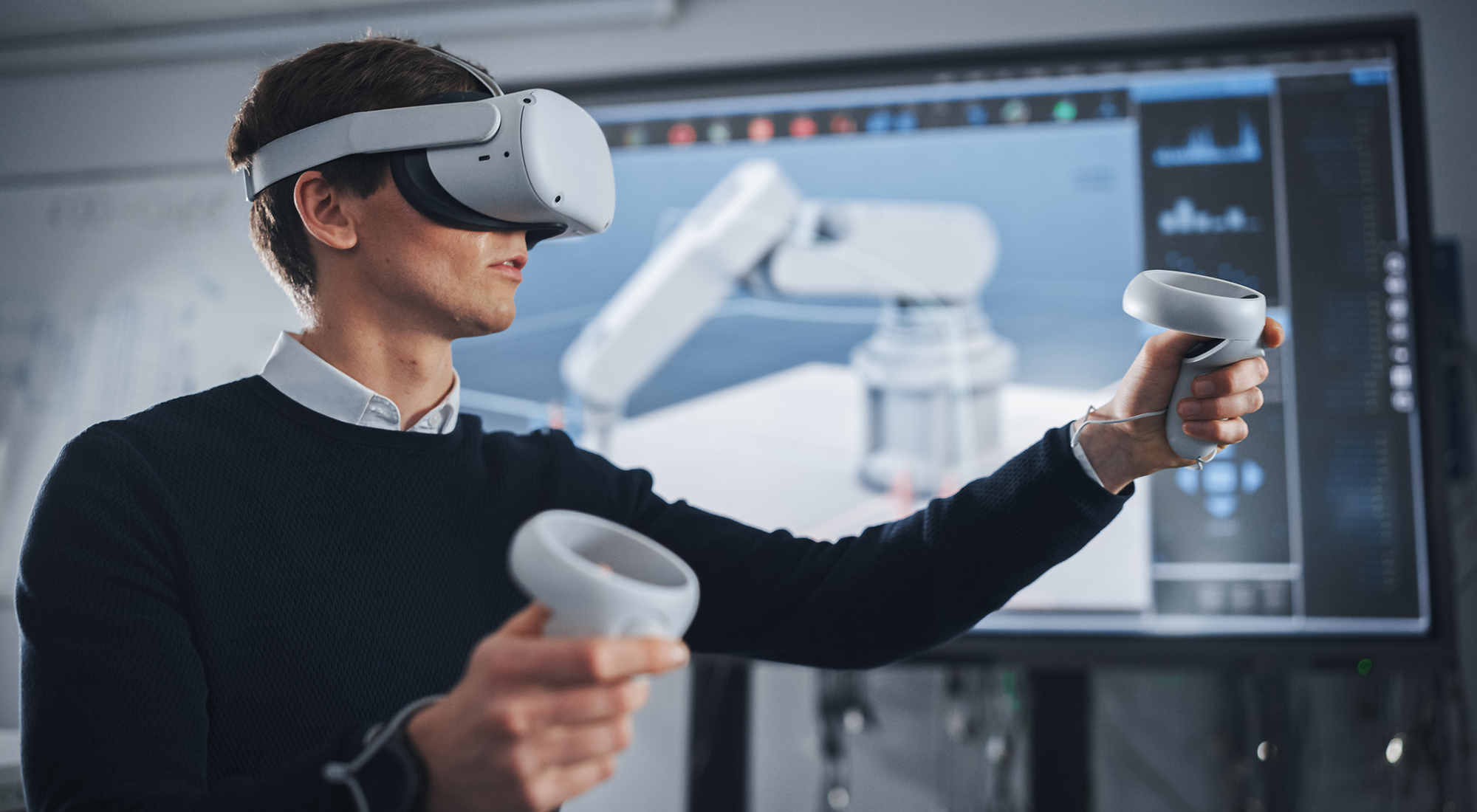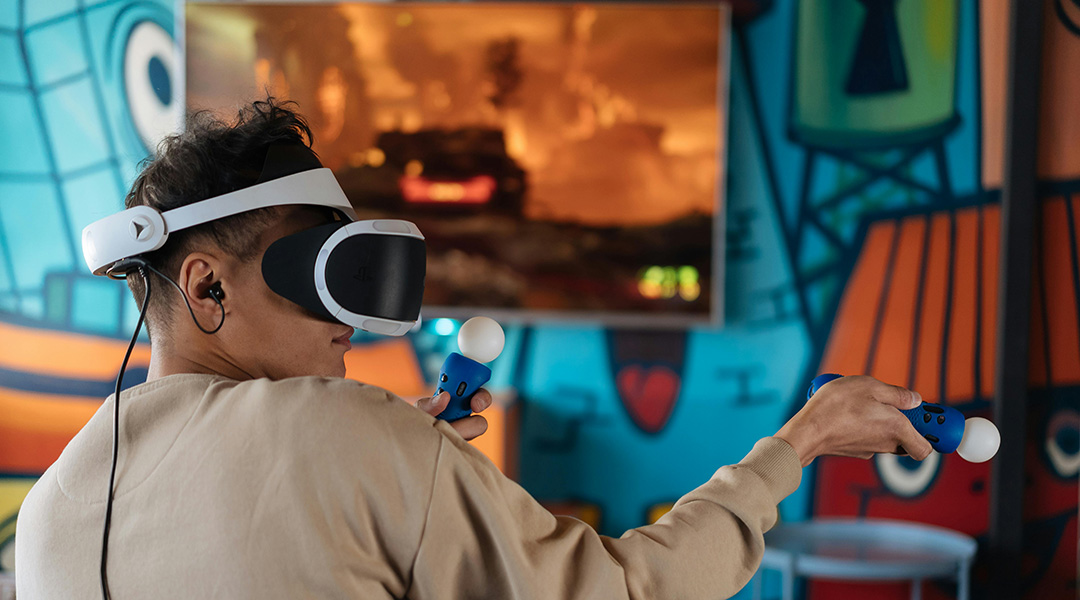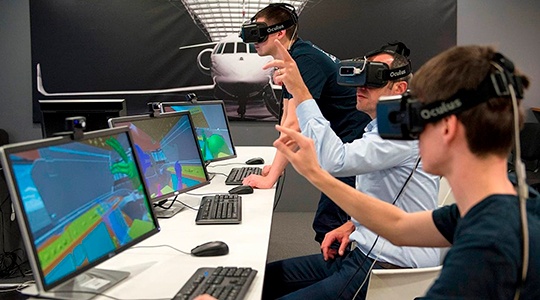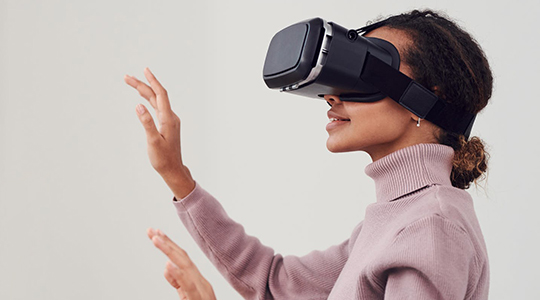Custom virtual reality simulations offer precise, tailored experiences for businesses aiming to elevate operational efficiency and customer engagement. These simulations provide an immersive platform for detailed scenario-based training, innovative product demonstrations, and interactive customer service experiences. With the ability to customize every aspect of the virtual environment, companies can address specific challenges, test new ideas, and gather valuable feedback without the constraints of the physical world.
Implementing such technology not only streamlines processes but also significantly cuts down on traditional costs associated with physical prototypes and real-world training setups. Moreover, it positions brands at the forefront of technological adoption, enhancing their reputation and appeal in the market. As the digital landscape evolves, the strategic integration of custom virtual reality simulations becomes an essential tool for businesses looking to stay ahead in their respective industries.
The Evolution of Virtual Reality and Simulations
The evolution of virtual reality (VR) technology and its pivotal role in simulation training are underscored by significant advancements over the decades. Beginning in the 1950s with Morton Heilig's Sensorama, an immersive machine designed to engage all senses, the foundation was laid for what VR would become. The early innovation demonstrated the potential of VR in creating engaging, multi-sensory experiences, setting the stage for future developments.
The 1960s brought further progress with Heilig's invention of the first head-mounted display (HMD) and Ivan Sutherland's "Ultimate Display," a concept that envisioned a virtual environment indistinguishable from real life. Such advancements highlighted the potential for VR to create highly immersive training environments, a concept that would be embraced by various industries in the years to come.
The military was among the first to recognize the value of VR for simulation training, with Thomas Furness developing advanced flight simulators in the late 1960s. This application of VR technology marked a significant shift towards practical, hands-on training tools, providing a safe and controlled environment for high-risk training scenarios.
By the late 1980s and early 1990s, VR technology had evolved to include more sophisticated simulations and haptic feedback, allowing for more intuitive interaction with virtual environments. This period saw VR becoming more accessible to industries beyond entertainment, with applications in medical training, aviation, and beyond.
Today, VR simulation training is a cornerstone in numerous fields, offering innovative solutions for education, skill development, and operational planning. The journey from early sensory machines to advanced simulation platforms showcases a trajectory of rapid innovation driven by the need for immersive, effective training environments.
Understanding Virtual Reality Simulations
Understanding Virtual Reality Simulations within the context of "digital twin vs. simulation" unveils distinct business functionalities and applications. A simulation constructs a digital model to explore various scenarios within a controlled environment, offering insights for decision-making and strategic planning without real-world repercussions. It's a tool primarily used in design phases and for testing theoretical outcomes under different conditions.
On the other hand, a digital twin transcends mere simulation by integrating real-time data from its physical counterpart through IoT devices, enabling a dynamic and evolving virtual model. This allows businesses to not only simulate scenarios but also monitor and analyze actual performance in real time, making it invaluable for lifecycle management, predictive maintenance, and operational optimization.
The choice between digital twins and simulations hinges on specific business needs. For instance, simulations are ideal for scenario testing, training, and strategic planning where a high-fidelity representation of reality isn't crucial. Conversely, digital twins are best suited for applications requiring ongoing synchronization with real-world assets, offering deeper insights and predictive analytics based on real-time data.
In essence, while simulations provide a snapshot based on theoretical data, digital twins offer a continuous, data-driven reflection of the physical asset, enabling more nuanced decision-making and strategic foresight in business operations. Integrating virtual reality in both simulations and digital twins marks a significant leap in how businesses can visualize, interact with, and derive insights from their digital models, further blurring the lines between the virtual and the real.
Core Technologies Behind VR

Diving into the core technologies behind virtual reality, we uncover an intricate tapestry of innovation where advanced software algorithms meld seamlessly with cutting-edge hardware. These technologies, including high-definition displays, motion tracking systems, and powerful graphics processing, collaborate to create deeply immersive and interactive digital realms. By simulating sensory experiences such as sight, sound, and touch, VR technologies transport users to meticulously crafted virtual worlds, offering unparalleled experiences that challenge the very notion of reality.
Head-Mounted Displays
Head-mounted displays encapsulate the user's vision with high-resolution screens, offering a panoramic view that tracks head movements accurately. These devices, equipped with lenses that adjust the display for each eye, create a stereoscopic effect, giving depth to virtual environments and making digital interactions feel astonishingly real.
Motion Tracking Systems
Motion tracking systems capture the user's movements, translating physical actions into virtual equivalents with precision. Utilizing a combination of sensors and cameras, these systems ensure that every gesture, step, and turn is mirrored in the virtual space, allowing for a seamless blend of user motion and digital response.
Haptic Feedback Devices
Haptic feedback devices provide tactile sensations, simulating the touch and feel of virtual objects. Through vibrations, resistance, and other physical cues, these devices mimic the texture, weight, and shape of digital entities, enriching the VR experience by engaging the sense of touch, thereby bridging the gap between virtual and tangible.
Types of Virtual Reality Simulations
Exploring the types of virtual reality simulations reveals a spectrum from fully immersive environments to augmented realities that blend digital elements with the physical world. Each type offers unique experiences tailored to engage users in everything from complex training scenarios to interactive gaming and educational content.
Educational Simulations
Educational simulations in virtual reality offer an immersive learning platform where theoretical knowledge meets practical experience. By simulating real-world scenarios, students gain hands-on exposure without the risks or costs associated with physical trials. Complex subjects become accessible, from dissecting virtual cadavers in medical training to manipulating atomic structures in chemistry.
Interactive elements and immediate feedback enhance understanding and retention. Customizable environments cater to various learning styles, making education inclusive and engaging. VR simulations transform abstract concepts into tangible experiences, fostering critical thinking and problem-solving skills essential for the workforce of tomorrow.
Training Simulations for Businesses
Training simulations for businesses harness Virtual Reality to revolutionize professional development, enabling employees to master skills in risk-free, virtual settings. From intricate surgical procedures to high-stakes financial analysis, these simulations provide realistic practice opportunities across diverse industries.
Employees engage in lifelike scenarios, making decisions and learning from outcomes without real-world repercussions. Such an innovative approach accelerates learning, enhances performance, and reduces training costs. By offering a safe platform for error and experimentation, VR simulations empower businesses to cultivate a highly skilled workforce ready to tackle complex challenges confidently and competently.
Entertainment and Gaming
Virtual reality in entertainment and gaming creates immersive experiences transporting players to fantastical worlds. Gamers don intricate headsets, stepping into roles from intergalactic travelers to historical figures, engaging in adventures previously confined to the imagination. Enhanced interactivity allows for a deeper connection with the game environment, where every action and decision impacts the virtual experience.
Cutting-edge graphics and responsive controls add layers of realism, making digital landscapes almost indistinguishable from the real world. As this technology evolves, the boundary between player and protagonist blurs, offering a new dimension of storytelling and engagement in digital entertainment.
Both Sides of Using VR Simulations in Your Practice
Integrating virtual reality simulations into practice offers immersive training environments and cost-effective solutions, yet technological adoption and user experience challenges persist. Enhanced realism facilitates skill development without real-world risks, but technical issues and initial investment can hinder widespread implementation. Balancing the transformative potential against practical constraints ensures the effective use of VR in professional settings.
1. Advantages of VR Simulations
Virtual reality simulations transform learning and skill development by providing immersive experiences without physical constraints. Users engage in lifelike scenarios, enhancing retention and understanding through active participation. Industries from healthcare to aviation benefit from risk-free environments where errors become valuable lessons, not liabilities.
Customizability allows for tailored experiences, meeting specific training needs across diverse fields. Cost efficiency emerges as VR reduces the need for physical resources, travel, and time spent in traditional training setups. Accessibility broadens, with remote learning opportunities breaking geographical barriers, democratizing education and professional development.
2. Technical and Ethical Challenges
Virtual reality simulations, while transformative, present technical hurdles and ethical dilemmas. High-quality VR demands robust hardware and sophisticated software, necessitating significant investment and ongoing maintenance. Technical glitches can disrupt the immersive experience, detracting from learning outcomes.
Ethically, the realism of VR raises concerns about psychological impacts, desensitization to real-world consequences, and privacy in data-intensive environments. Ensuring equitable access poses another challenge, as not all institutions or individuals can afford the latest VR technologies. Navigating these waters requires a balanced approach, prioritizing user welfare and technological inclusivity.
3. Overcoming the Barriers
Addressing the challenges of virtual reality simulations involves a multi-faceted strategy. Investment in research and development can lead to more cost-effective and reliable VR solutions, broadening access. Establishing best practices and ethical guidelines ensures user safety and data protection, fostering trust in VR technologies.
Collaboration between developers, educators, and industry professionals aids in creating relevant and impactful content. Continuous feedback loops, incorporating user experiences, refine and improve VR applications. Education and awareness initiatives demystify VR, encouraging wider acceptance and integration into mainstream training and development programs.
Applications of Virtual Reality Simulations to Get Inspiration from

Virtual reality simulations inspire across sectors, from immersive educational platforms that bring history to life to medical VR enabling surgeons to rehearse complex procedures. Architects visualize structures before construction, while environmental scientists simulate climate change impacts, offering insights for sustainable solutions and innovative approaches to global challenges.
Healthcare and Medicine
Virtual reality revolutionizes patient care, surgical training, and therapeutic practices, enhancing both medical education and patient outcomes.
1. Surgical training and planning
Virtual reality in surgical training and planning allows surgeons to practice complex procedures in a risk-free environment. By simulating realistic surgical scenarios, practitioners can refine their techniques, anticipate potential complications, and devise optimal surgical strategies. This not only boosts the surgeon's confidence but also enhances patient safety by reducing the likelihood of errors. VR's interactive nature enables continuous skill development, keeping pace with medical advancements and ensuring surgical teams are prepared for any challenge they might face in the operating room.
2. Therapy and rehabilitation
Virtual reality transforms therapy and rehabilitation, offering engaging and personalized treatment options. Patients recovering from strokes, injuries, or surgeries immerse themselves in virtual environments designed to promote motor skills, balance, and cognitive functions. By gamifying rehabilitation exercises, VR increases patient motivation and adherence to treatment plans. Real-time feedback and progress tracking enable therapists to adjust treatments based on individual needs, accelerating recovery times. VR's immersive nature helps patients overcome physical and psychological barriers, making rehabilitation a more positive and effective experience.
3. Medical education
Virtual reality elevates medical education by providing students with immersive learning experiences. Through VR, complex anatomical structures and physiological processes are visualized in three dimensions, fostering a deeper understanding of the human body. Students can practice diagnostic and surgical procedures without the need for cadavers, allowing for repeated practice and mastery of skills. VR simulations of rare medical conditions prepare students for real-life scenarios, bridging the gap between theory and practice. This innovative approach to medical education enhances learning outcomes and prepares future healthcare professionals for the challenges of modern medicine.
Aerospace and Defense
Aerospace and Defense take advantage of virtual reality for advanced training and strategic planning, enhancing safety and efficacy. Virtual reality in aerospace and defense transforms training, offering immersive experiences that closely mirror real-world challenges.
1. Flight and space simulations
Pilots and astronauts engage in flight and space simulations, mastering controls and responding to emergencies within safe, virtual confines. Tailored scenarios, from routine operations to critical system failures, ensure comprehensive preparedness. This precision in training enhances skill sets, reduces errors, and ensures high-stakes missions are executed flawlessly, reflecting the critical importance of virtual simulations in advancing aerospace capabilities. Thus, the immersive nature of VR aids in acclimating users to the psychological and physical demands of space travel and high-altitude flights, enhancing overall mission readiness and safety.
2. Military training and tactical planning
In military training and tactical planning, virtual reality creates realistic combat scenarios, from urban warfare to strategic operations, without the risks of live training. Soldiers practice in diverse environments, adapting to evolving tactics and enemy behaviors. The feedback loop from these sessions sharpens decision-making, teamwork, and leadership skills, proving indispensable for modern military readiness. The technology's adaptability allows for the customization of scenarios to reflect current threats and challenges, fostering adaptability, strategic thinking, and teamwork among troops.
3. Disaster response training
Virtual reality also revolutionizes disaster response training, simulating catastrophic events with lifelike accuracy. First responders navigate through complex scenarios, from natural disasters to human-made crises, honing their skills in command, control, and on-the-spot problem-solving. The immersive nature of VR ensures that teams are not only technically prepared but also emotionally resilient, ready to face real-world calamities with competence and composure. Therefore, the controlled yet realistic setting of VR training enhances the ability to maintain composure, coordinate effectively with teams, and implement swift, life-saving actions under pressure.
Architecture and Urban Planning
Virtual reality revolutionizes design visualization and stakeholder engagement in architecture and urban planning, enhancing precision and inclusivity.
1. Design visualization and modification
Design visualization and modification through virtual reality transforms architectural concepts into tangible experiences. Architects and clients explore and traverse virtual models, assessing aesthetics, spatial dynamics, and material finishes with unparalleled clarity. Interestingly, the immersive interaction facilitates real-time modifications, allowing for the swift iteration of designs. The ability to visualize complex structures in detail before physical construction commences reduces errors, saving time and resources, and ensures that the final build aligns closely with the envisioned project.
2. Stakeholder engagement and communication
Stakeholder engagement and communication in architecture and urban planning benefit significantly from virtual reality. This technology bridges the gap between technical drawings and layperson understanding, enabling stakeholders to visualize proposed projects realistically and interactively. By walking through virtual models, stakeholders can provide informed feedback, fostering a collaborative design process. Such enhanced communication ensures that the final designs are more aligned with the community's needs and expectations, facilitating smoother project approval and implementation processes.
3. Safety and accessibility analysis
Safety and accessibility analysis within architectural design and urban planning gains a new dimension with virtual reality. Designers and engineers simulate the movement of diverse populations through virtual spaces, identifying potential hazards and accessibility barriers. So, the proactive approach to safety and inclusivity allows for the adjustment of designs to accommodate all users, including those with disabilities. By prioritizing safety and accessibility from the outset, projects not only comply with regulations but also promote a more inclusive and user-friendly environment.
Where Virtual Reality Simulations Bring Most Profit
Virtual reality simulations unlock significant profit potential in diverse sectors by enhancing training efficiency, product design, and customer experiences. Industries like healthcare, aerospace, and retail see substantial returns through improved performance, reduced costs, and innovative engagement strategies, positioning VR as a transformative investment for forward-thinking businesses.
Reimagining Healthcare Training
Reimagining healthcare training with virtual reality offers unparalleled opportunities for immersive learning and skill enhancement:
Interactivity. Virtual environments enable hands-on practice without patient risk, allowing healthcare professionals to refine techniques and decision-making skills.
Realism. High-fidelity simulations replicate clinical scenarios, from routine examinations to complex surgical procedures, enhancing procedural understanding.
Customization. Training modules adapt to individual learning needs, focusing on specific skills or specialties and fostering personalized professional development.
Feedback. Immediate performance assessments highlight strengths and areas for improvement, accelerating the learning curve.
Accessibility. Remote access to VR training democratizes education, breaking down geographical barriers and expanding learning opportunities.
Safety. Risk-free environments encourage exploration and mistake-making as learning tools without real-world consequences.
Transforming Architectural Design and Construction
Transforming architectural design and construction with virtual reality brings innovation and efficiency to the forefront:
Visualization. Virtual models offer a comprehensive view of projects before construction begins, enabling detailed inspection and modification.
Collaboration. Stakeholders from various locations can interact with designs in real time, facilitating consensus and accelerating decision-making processes.
Integration. VR allows for seamless incorporation of data from various sources, ensuring all design aspects are cohesive and well-coordinated.
Simulation. Environmental and structural simulations test the resilience and sustainability of designs under diverse conditions, ensuring safer buildings.
Training. Construction teams train in virtual scenarios to understand complex structures, reducing on-site errors and enhancing safety protocols.
Enhancing Military and Defense Training
Virtual reality revolutionizes military and defense training by providing realistic, immersive environments for a wide range of combat and strategic scenarios:
Tactical skills. Soldiers practice maneuvers and strategies in diverse, controlled settings, from urban warfare to jungle operations.
Decision-making. High-pressure situations in VR develop quick, practical decision-making skills crucial for battlefield success.
Team coordination. Virtual exercises enhance unit cohesion and communication, which is essential for complex missions.
Equipment familiarity. Troops gain proficiency with a variety of weaponry and technology within safe, simulated environments.
Psychological preparedness. Exposure to stress-inducing scenarios builds resilience, preparing soldiers for the mental challenges of combat.
Innovating in Education and Classroom Learning
Virtual reality introduces groundbreaking approaches to education and classroom learning, making complex concepts accessible and engaging:
Interactive lessons. VR transforms traditional subjects into interactive experiences, fostering more profound understanding and retention.
Global exploration. Students virtually visit historical sites, natural wonders, and outer space, transcending classroom walls.
Practical skills. Simulated labs and workshops offer hands-on practice in subjects like science and engineering without physical constraints.
Language immersion. VR environments immerse students in foreign languages and cultures, enhancing linguistic proficiency and cultural awareness.
Special needs education. Customizable VR settings accommodate diverse learning needs, providing tailored educational experiences for all students.
Boosting Retail and E-commerce Experience
Virtual reality is redefining the retail and e-commerce experience, offering customers innovative ways to interact with products:
Immersive shopping. Consumers explore virtual stores, experiencing the ambiance and products as if physically present, bridging the gap between online and in-store shopping.
Try-before-you-buy. VR enables customers to visualize products in real-world settings or try on virtual clothing, enhancing confidence in purchase decisions.
Personalized experiences. AI-driven VR tailors product recommendations and store layouts to individual preferences, creating a customized shopping journey.
Interactive storytelling. Brands use VR to convey their story and values, forging deeper emotional connections with consumers.
Virtual pop-ups. Temporary VR stores for product launches or special events generate excitement and exclusivity, attracting a global audience.

Climb on Top with Program-Ace’s VR Simulations
Climb on top of industry innovation with Program-Ace, your professional software development service provider for cutting-edge VR simulations. Our expertise ensures your project transcends traditional boundaries, offering immersive experiences that captivate and engage. Selecting Program-Ace as your partner means engaging with a team that has a proven track record of overcoming complex technical challenges in the VR domain.
Our experts specialize in the latest VR development tools and methodologies, ensuring your project transitions seamlessly from concept to a fully functional VR application. With numerous successful VR projects across various industries, Program-Ace not only promises innovation but delivers tangible results, making your envisioned VR project a practical and operational reality.
Our commitment to excellence and innovation makes us the ideal partner for transforming your ideas into impactful VR solutions. For a partnership that elevates your objectives with unparalleled VR simulations, contact us. Let's shape the future together.













